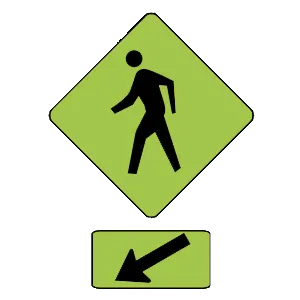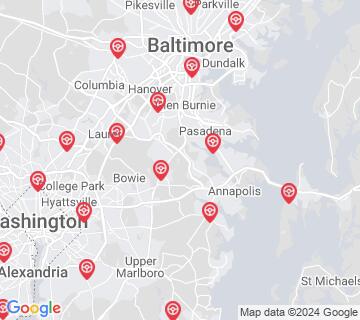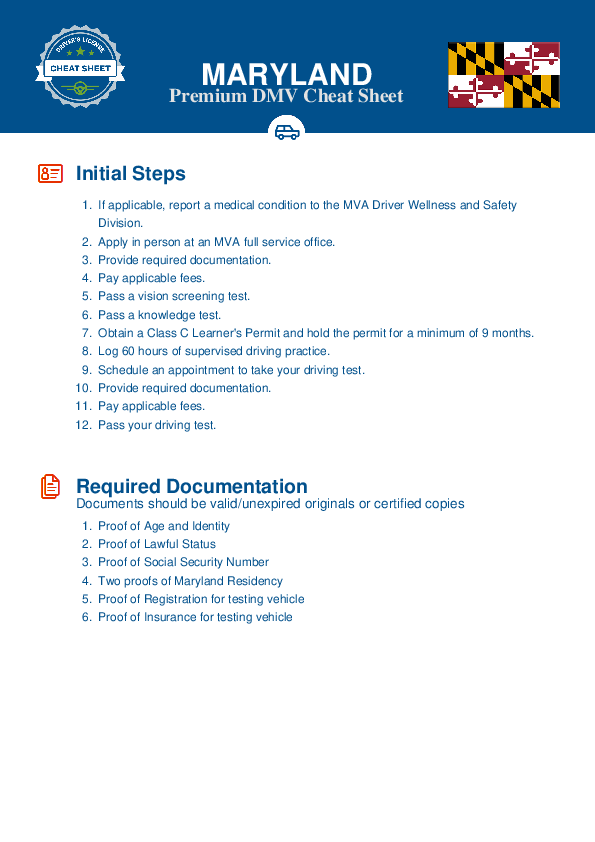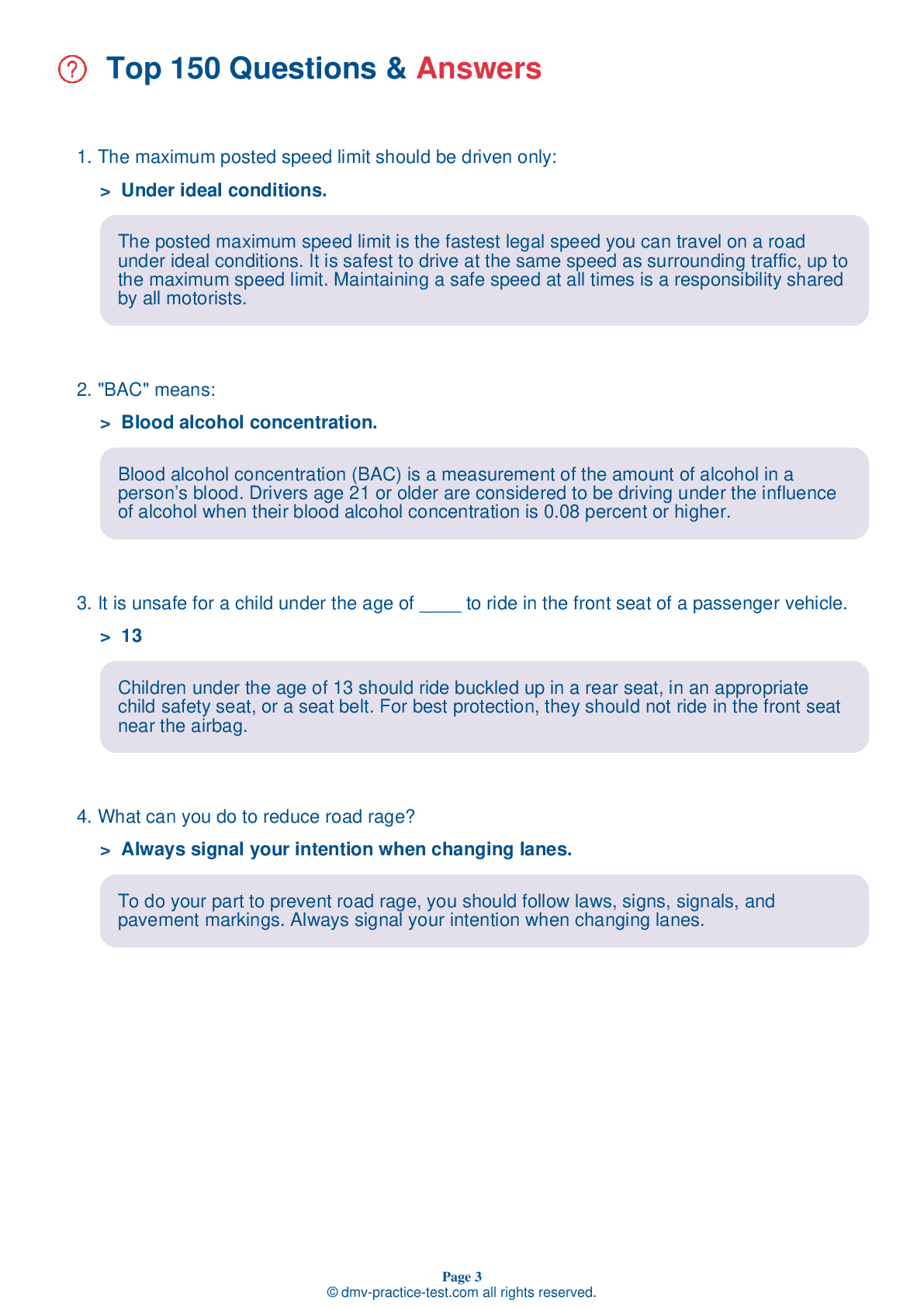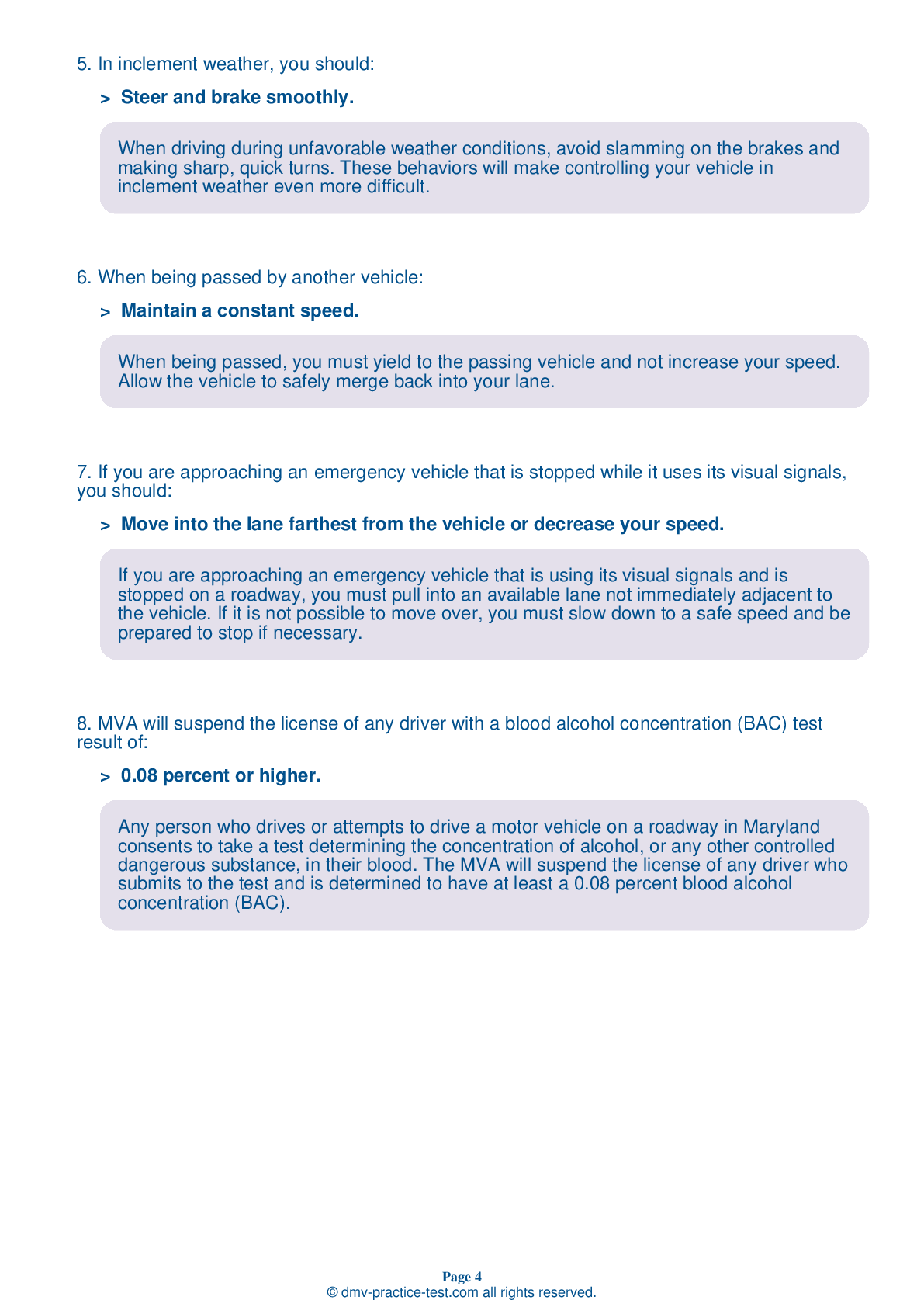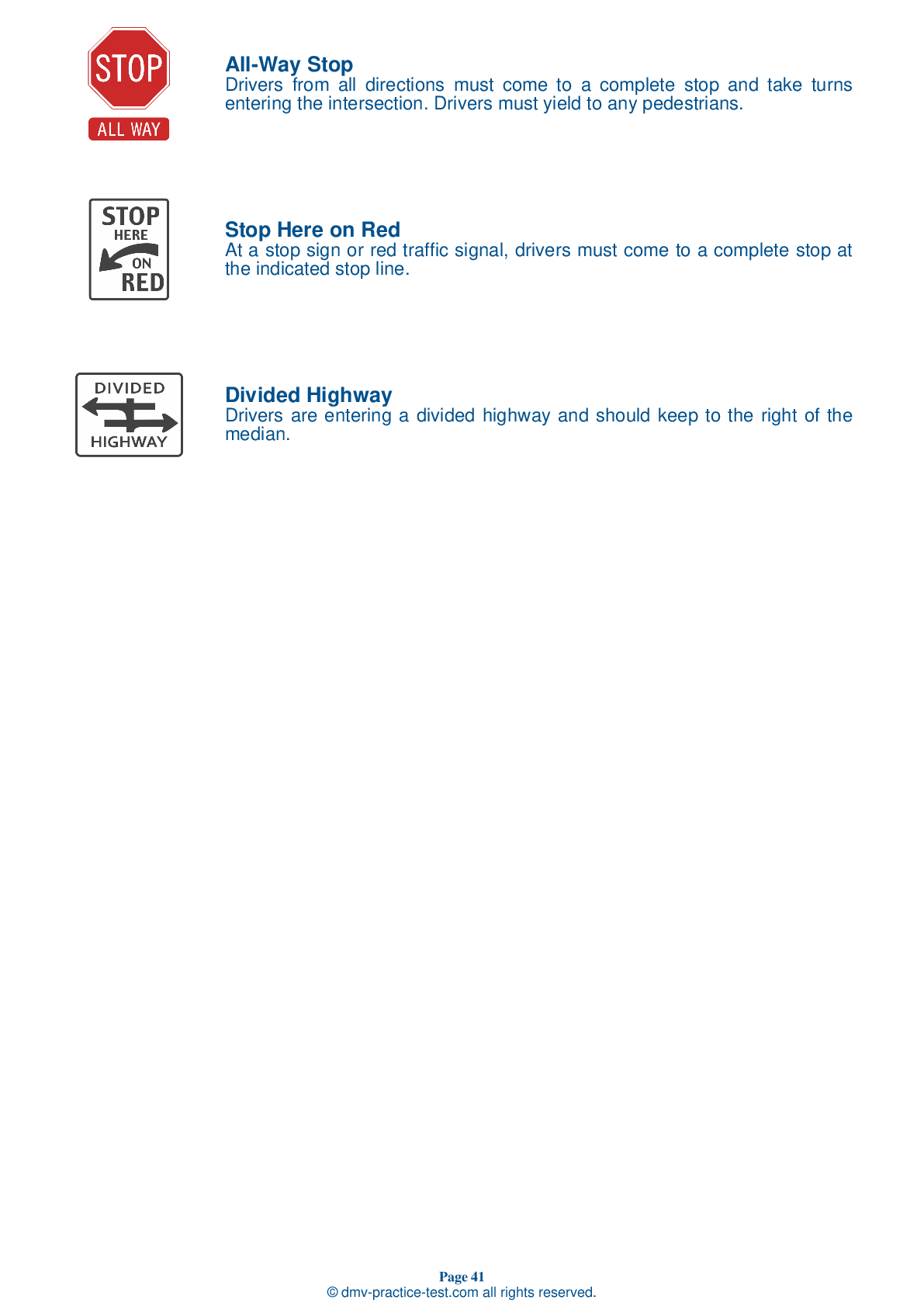FREE Maryland DMV Practice Test #21
Maryland DMV practise examinations have been updated for January 2025. It includes questions based on the Maryland Driver Handbook's most essential traffic signals and regulations for 2025. Use actual questions that are very similar (often identical!) to the DMV driving permit test and driver's licence exam to study for the DMV driving permit test and driver's licence exam.
On the practise exam, each question gets a tip and explanation to help you remember the concepts. The written component of the official Maryland DMV test will include questions about traffic rules, traffic signs, and driving statutes, as well as knowledge from the Driver Handbook.
To obtain a passing grade, you must correctly answer 22 of the 25 questions. Take our DMV practise exam to help you prepare for your Maryland instruction permit or driver's licence.
The DMV exam is available in several languages.
Using any kind of testing assistance will result in an automatic fail, and the DMV may take additional action against your driver's licence, so stay away from it.
1 . To avoid glare from the headlights of an approaching car:
You should avoid looking toward the bright lights of an oncoming vehicle by glancing toward the right side of the road. After looking briefly toward the side of the road, continue looking ahead to check on the position of the other vehicle.
2 . This sign means:

This sign indicates that there is a yield sign ahead. You should begin to slow down when you see this warning sign.
4 . Which of the following statements about driving speed is true?
As driving speeds increase, the chance of a fatality in the case of a collision increases. If you are going faster than 80 miles per hour, you have almost no chance of living through a crash. The speed you drive affects your stopping distance, so you should increase your following distance as you increase your speed.
5 . When entering traffic after being parked at a curb, you:
Any time that you merge into city or highway traffic, you should wait for a gap in traffic large enough for your vehicle to get up to the speed of other traffic.
6 . When turning left from a two-way street onto a one-way street, you should:
When making any turn, turn from the lane closest to the direction you wish to travel into the first available legal lane. On a turn from a two-way to a one-way street, this means you should turn into the first lane.
7 . What does this road sign mean?
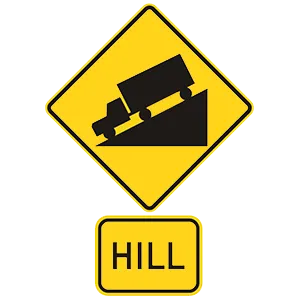
Warning signs are usually yellow with black markings. This sign indicates that you are approaching a steep hill. Slow down and be ready to shift to a lower gear to control your speed and protect your brakes from damage.
8 . What is the only effective way to remove alcohol from the body?
The only way to remove the effects of alcohol from the body is to let time pass. Eating, drinking coffee, or taking a shower will not speed up this process.
Search the best driving school in your neighbourhood
2025 Maryland | Frequently Asked Questions
1. Be at least 15 years and 9 months old.
2. Pass the vision exam.
3. Complete the Maryland MVA Online Driver Test Tutorial.
4. Pass the knowledge test.
5. Provide proof of identity, age, and Maryland residency.
6. Have a parent or guardian co-sign your application.
7. Pay the required fee.
Remember, you must hold your learner's permit for nine months before you can take the driving test.
